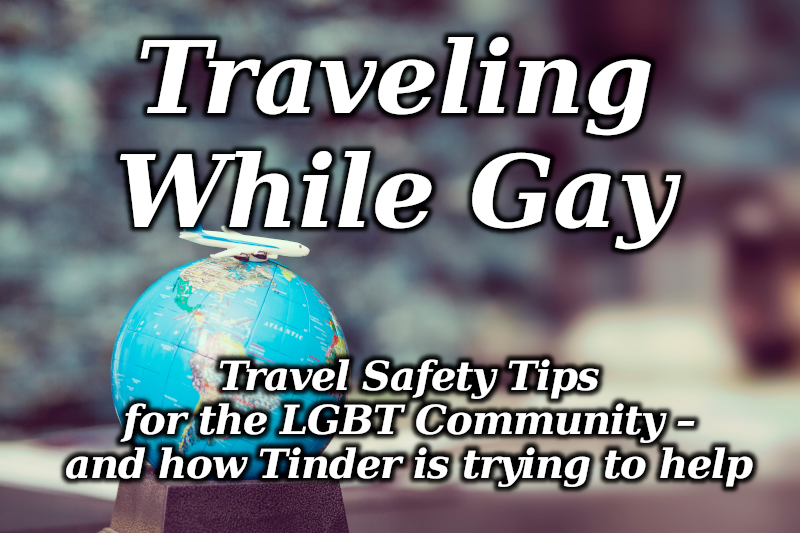So here you are, you and your partner, members of the LGBT community, choosing your next travel destination. Where should you go? Where is safe enough for an LGBT couple to go and have fun?
You may have always dreamt of travelling to Italy, but perhaps you are unsure about how the locals may react to an LGBT couple. Of course it’s natural to be concerned about these issues, especially for LGBT travel abroad. Italy offers a unique issue as it is one of those few European countries that does not have an official position towards same-sex couples.
Of course, being gay isn’t illegal in Italy, but the country also doesn’t have any form of civil union. LGBT people have all the rights to live their sexuality openly, and so they do, even if Italy is still a socially conservative country. However, most people in Italy are beginning to become more accepting of gay people and the LGBT community at large as the cultural view towards sexuality becomes increasingly progressive, particularly among younger Italians. As a result, more and more native Italians are happy to accept LGBT couples although no official stance has been declared.
In short, holding hands or hugging your partner will not raise many eyebrows, although homosexuality is more accepted in the North than in the South. As is typical in many countries around the world, in Italy smaller towns tend to be less accepting than the big metropolises, as it takes time for cultural change to filter through the cities and into the smaller, more rural areas.
Wherever you are – Rome, Naples or Palermo – you will be surrounded by history, traditions and beautiful landscapes. What is really fascinating about Italy is the diversity of its landscapes. From the Alps in the North to the flourishing hills in Toscana, which are perfect for those who like to spend some quiet time with their partner, sipping local red wine while looking at the sunset. Then there are the miles and miles of sun-soaked shores that have the ability to make everyone happy. Italy offers so much diversity that it’s easy to see why so many consider it a paradise on Earth that absolutely everyone should visit at least once.
As I’ve said before, the big cities are the safest, and I would like to talk about one of them in particular since it is gaining popularity for being extremely gay-friendly and is also one of Italy’s gems: Milan.
Located in Lombardia, Northen Italy, Milan is the headquarters of Arcigay, the country’s leading gay organization. Many Milanese will tell you that this city is the unofficial gay capital of Italy, and they are right.
Mostly known for its fashion weeks, this city has a lot more to offer. From the town center, where you can find the breath-taking Duomo (the exterior view is amazing, but remember to take some time to tour its breathtaking interior) to the majestic Sforzesco’s castle, which is one of Milan’s most well-known attractions. I fact, it is such an attraction that when David and Victoria Beckham tried to purchase it in 2009, the Milan city council stepped in and quickly informed the couple there was no way they could sell off a piece of Italy’s heritage, regardless of the offer. This dedication to maintaining local culture while still embracing cultural change has made Milan an eclectic city with a rich cultural heritage.
It’s also worth noting that Milan is a relatively crime-free place, and has excellent public transportation which, during the weekends, is available all night long. Compared to other cities, it is also very cheap. Milan is also a very romantic place, and any couple, including LGBT couples, should take advantage of that. In fact, probably one of the best places to propose to your partner is on Milan’s Duomo rooftop.
Another romantic spot is Rotonda della Besana, in Via Enrico Besana 12, which is a late baroque building surrounded by probably one of the most beautiful and peaceful parks in the city. It offers the best of both worlds – a gorgeous view and some privacy among the hustle and bustle of the city for you and your partner to create a romantic memory. If it is sunny, then a picnic at Parco Sempione is an absolute must and it is even better if followed by a touching proposal (I swear, I am not trying to drop any hints whatsoever to my partner. Well, maybe…).
Whilst monuments, parks and museums are at their best during daytime, pubs, discos and clubs are a must during the evening and into the night. And Milan is very famous for its nightlife, which is suitable for all tastes, styles and sexual orientations. If you are a member of the LGBT community, you have lots of places to choose from. Porta Venezia is the most popular area in the city, with tons of LGBT-friendly pubs and places. It is near the town center and it is easily reachable via public transportation. One of the best pubs, where you can have a romantic happy-hour with your partner, is Mono, in Via Lecco 6.
Then, if it’s Friday or Saturday night, you could go to Via Lodovico il Moro 171, where you can find the Toilet Club, a club where ‘everyone’s equal’, as their motto says. That’s right, it’s really called Toilet. Do expect a lot of toilet paper – that may be a bit strange at first, but they do offer simply the best nightclub experience in the city, complete with live music most weekends.
And how could I not mention the most famous gay-friendly club – Plastic, which has become renowned all over the world for it’s A-list international guests, from Madonna to Andy Warhol, just to name a few. Plastic is located in Via Gargano 15.
Many of these clubs require membership via Arcigay card, which is purchasable online. It does not cost that much and after buying it you can enter most of these clubs for free (even in other Italian cities).
As you can see, Milan is a safe and romantic place to visit, regardless of your sexuality. It offers a chance to visit one of the most historic countries in Europe and interact with a culture that continues to evolve and reach out positively to the LGBT community. So, what are you waiting for?
Written by Virginia Cafaro, edited by Kelly Rice





